Huntsville, AL Pollen and Allergy Report for Summer 2023
Pollen Allergy Trends in Huntsville, AL
When is pollen lowest in Huntsville, AL?

February
Lowest month total PPM
Avg. PPM
When is pollen highest in Huntsville, AL?

March
Highest month total PPM
Avg. PPM
How does pollen in Huntsville, AL compare to Alabama?
Huntsville has a lower average PPM than the state of Alabama.
Huntsville yearly avg PPM:
Alabama yearly avg PPM:
How does pollen in Huntsville, AL compare to the USA?
Huntsville has a higher average PPM than the USA.
Huntsville yearly avg PPM:
USA yearly avg PPM:
Is pollen worse this year in Huntsville, AL?
Spring 2023 was worse than spring 2022.
Spring 2023 PPM:
Spring 2022 PPM:
Average PPM in Huntsville, AL
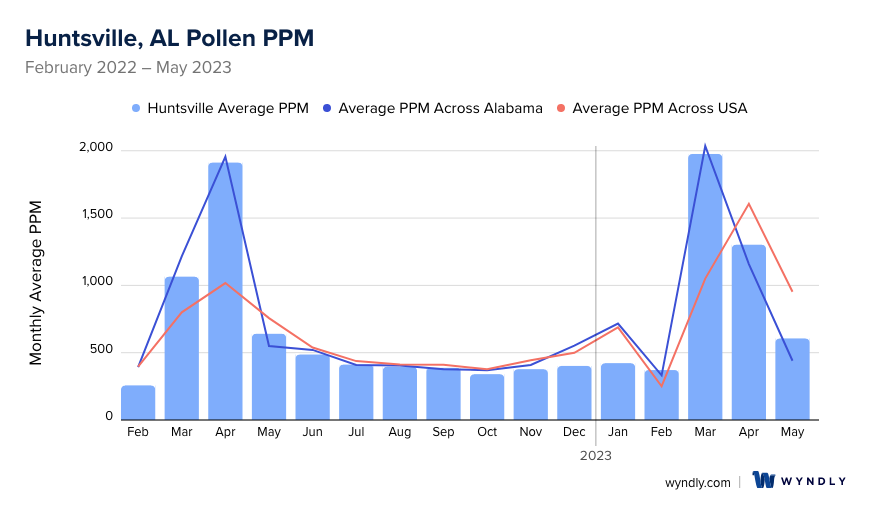
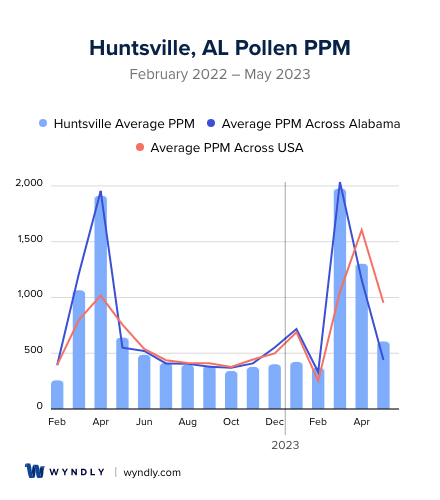
Huntsville, AL Pollen and Allergy Breakdown by Month
Grass
When is grass pollen highest in Huntsville, AL?
April has the highest grass pollen in Huntsville, AL with an average PPM of
When is grass pollen lowest in Huntsville, AL?
October has the lowest grass pollen in Huntsville, AL with an average PPM of
Tree
When is tree pollen highest in Huntsville, AL?
March has the highest tree pollen in Huntsville, AL with an average PPM of
When is tree pollen lowest in Huntsville, AL?
September has the lowest tree pollen in Huntsville, AL with an average PPM of
Weed
When is weed pollen highest in Huntsville, AL?
April has the highest weed pollen in Huntsville, AL with an average PPM of
When is weed pollen lowest in Huntsville, AL?
February has the lowest weed pollen in Huntsville, AL with an average PPM of
Huntsville, AL Pollen Monthly Breakdown by Pollen Type
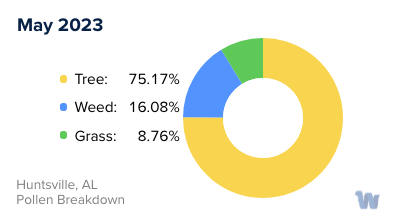
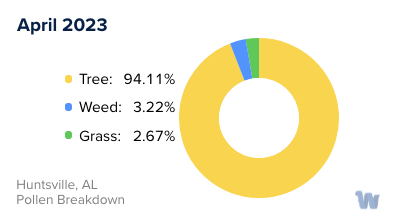
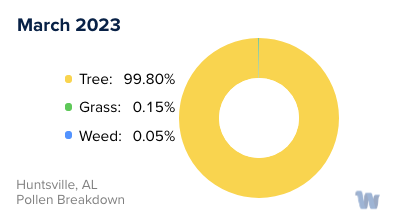
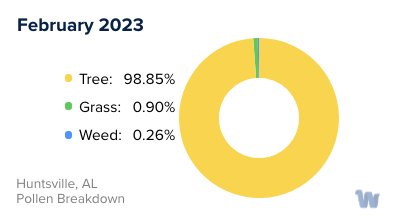
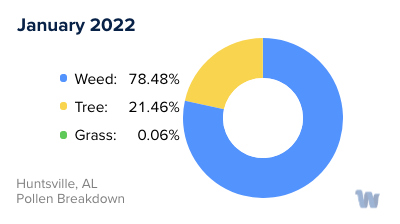
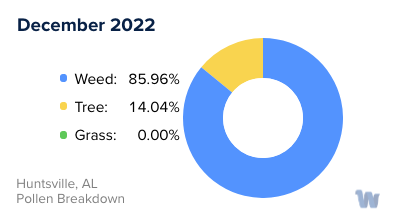
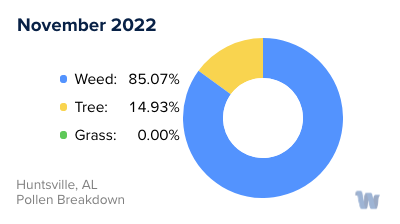
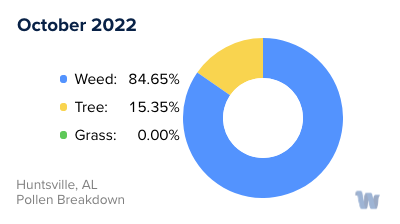
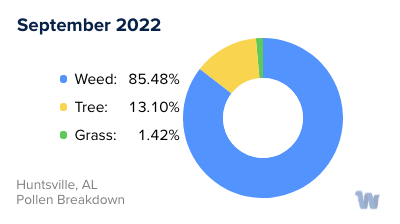
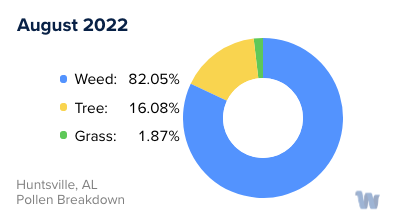
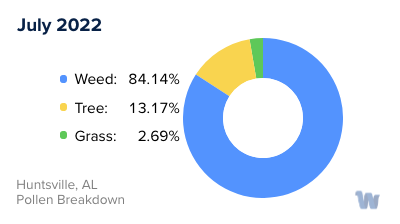
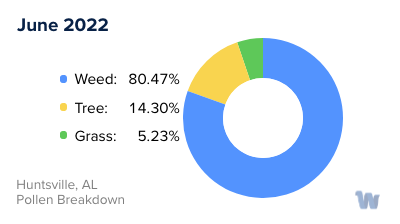
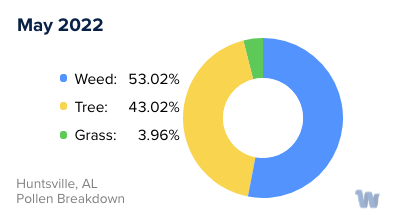
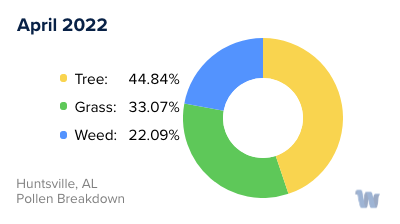
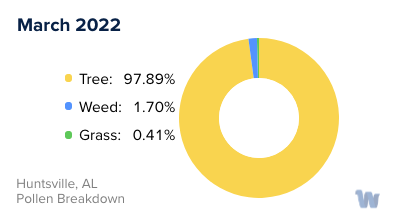
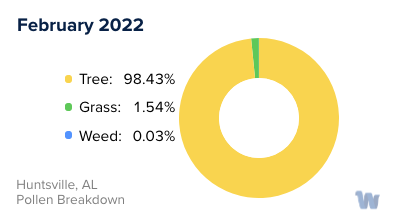
Pollen and Hay Fever in Huntsville, AL
In the city of Huntsville, Alabama, residents contend with a long allergy season, primarily due to the area's mild winters that enable plant life to thrive most of the year. The resulting pollen allergies can often cause discomfort and inconvenience for the city's inhabitants. Seasonal allergies are typically triggered by pollen from a variety of grasses, trees, and weeds, each releasing pollen during distinct times of the year.
The allergy season in Alabama begins as early as January, thanks to the mild winter, and can last until November, giving residents only a brief respite during the colder months. Depending on one's specific allergies, symptoms can manifest at any time throughout the year, with pollen allergies flaring up primarily in the spring, summer, and fall.
Spring allergies in Alabama are largely due to tree pollen. As we transition into the summer months, grass pollen takes the lead as the primary allergen. Come fall, pollen from weeds is the usual suspect for those suffering from seasonal allergies.
During the peak allergy months of April, May, June, and September, residents of Huntsville may notice an increase in their allergy symptoms. While it's advisable to stay alert to pollen counts during these periods, the evenings often bring a reprieve, as pollen counts tend to be lower at these times.
Alabama has a diverse array of flora contributing to the allergen mix. Some of the most common allergens include timothy grass, Johnson grass, Bermuda grass, Russian thistle, English plantain, and ragweed. In addition, a number of trees such as the juniper, olive, alder, elder birch, and maple trees also release pollen that can trigger allergies.
In summary, Huntsville, Alabama, sees a prolonged allergy season due to its mild winters, with different types of pollen causing allergies across the seasons. The diverse plant life in the region, from grasses to trees and weeds, contributes to the wide range of allergens present throughout most of the year.


